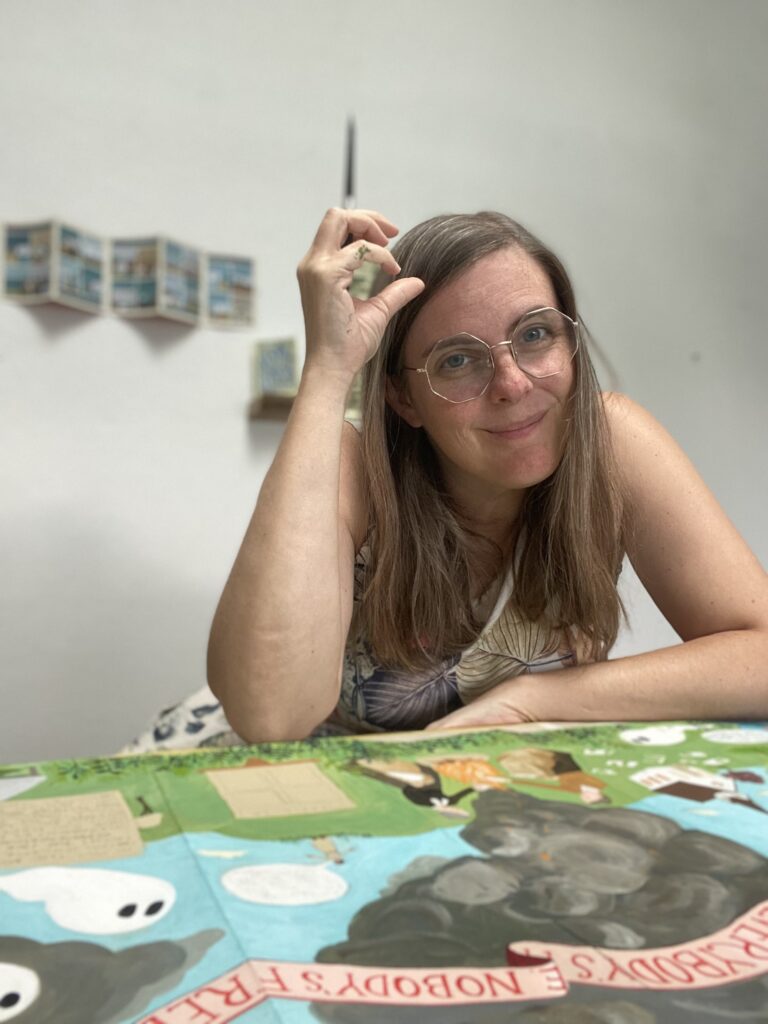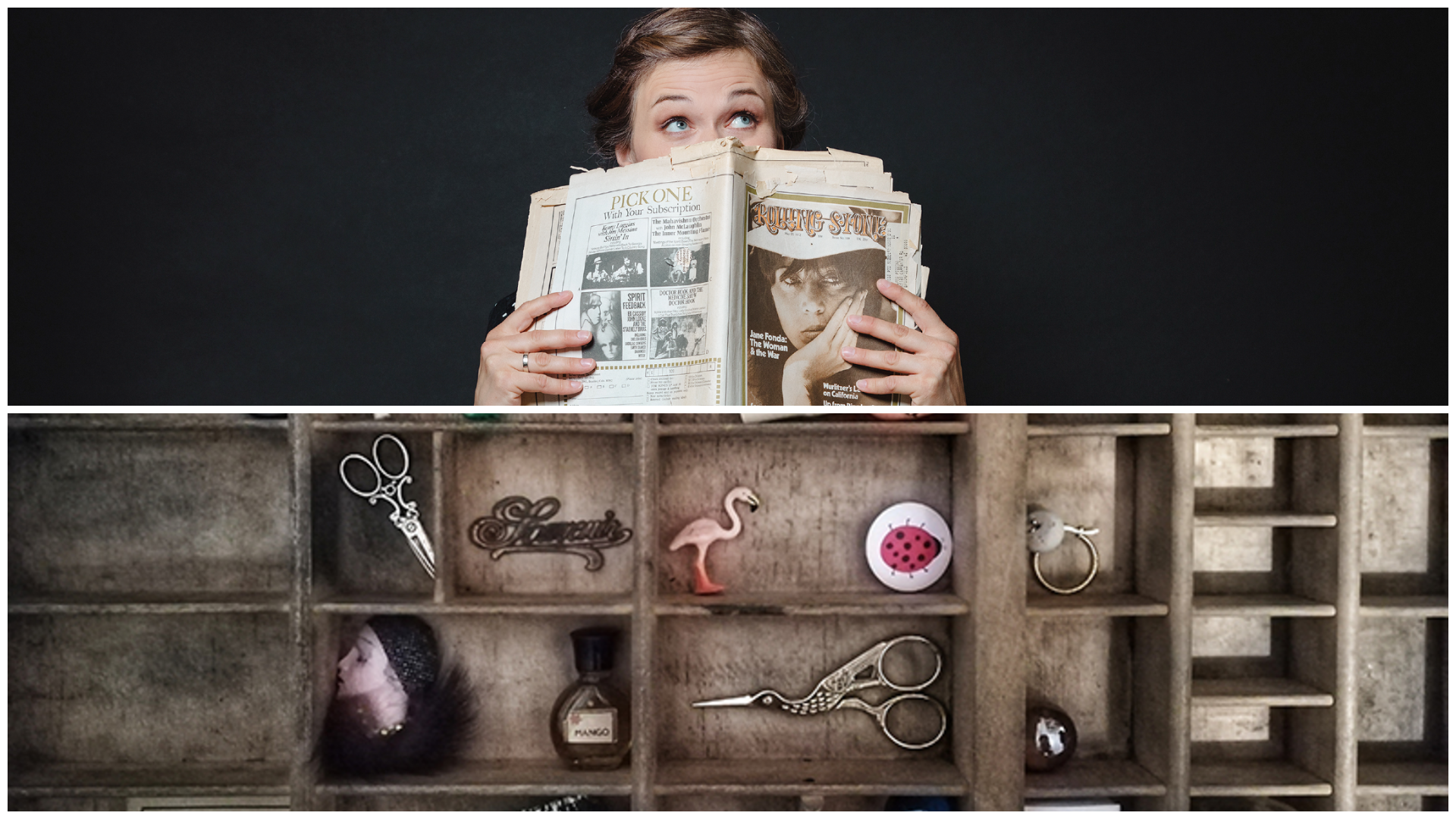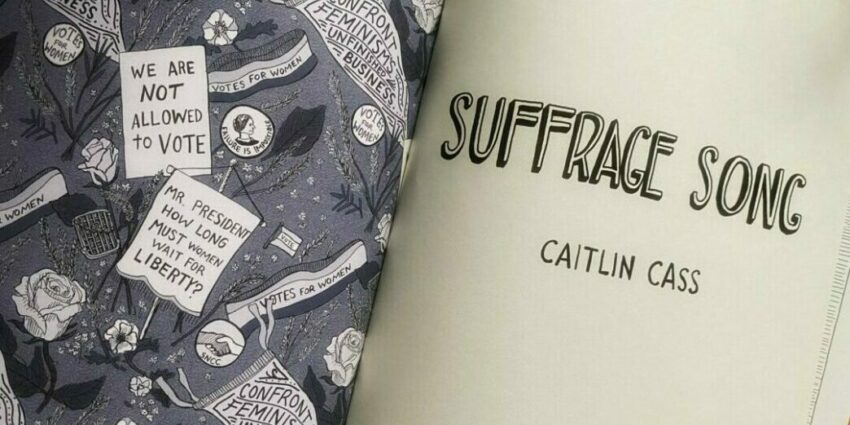I spoke to cartoonist Caitlin Cass about her book “Suffrage Song”. We quickly came to the question of what it takes for big movements and change and that hope and a belief in togetherness are probably the most important ingredients for this.
Caitlin, you are a graphic novelist, cartoonist, artist and teacher
I’ve always wanted to be a storyteller. I studied visual arts, philosophy and literature. While I was teaching at Buffalo Seminary, a high school in New York, I began researching and studying the history of the Civil Rights Movement, as well as African American History and Women’s History.
What was interesting for you?
History is all too often taught as the history of old white men. But where is the history of oppressed people? Where is the history of people of colour? The history of women? Of course, these histories exist, but were never the main focus when I was in school. I went in search of this history for my students and for people like me who might be curious, but do not have the time to do extensive research. With my work, I am trying to make a contribution to closing these gaps in history, by creating popular history that is inclusive of more stories.
Art is an important part of this process?
Art is an important vehicle for my work and teaching and always was. Back in 2009, during my studies, I started the comic series “The ‘Great’ Moments in Western Civilization”, which shows exemplary historical events as systems of failure and irrational hope. I’ve been dealing with failures in history for fifteen years, and “The ‘Great’ Moments in Western Civilization” is now published as a bi-monthly series.
Where do you think history fails?
I think there is a fine line where history becomes myth-making. History appears objective, but it is not. History has quite a life of its own. I use cartoons and comics to understand and depict this failure.
What was your starting point of “Suffrage Song”?
The suffrage movement was a big thing in the USA. A major starting point for my work on it was a 2020 project for Buffalo’s Burchfield Penney Art Centre in New York State to celebrate the 100th anniversary of the 19th Amendment, which allowed women to vote in the 1920 presidential election for the first time. In cooperation with the gallery, I developed a compilation of illustrations and comics entitled “Women’s Work: Suffrage Movements 1848-1965”, which were published on the Centres website and in a book, and were also featured in an exhibition in 2020 to mark the anniversary.
Why is the song in “Suffrage song” so important?
Songs were important in the Suffrage and Civil Rights movement. It was a way to build community and spread movement messages. But it is important to have in mind the songs also spread stereotypes and platitudes…
Is it possible to avoid stereotypes in the story? How did you deal with that?
It’s not that easy. In my work I’ve also come up against limits and made mistakes, because all too quickly the suffragist movement becomes a big project that requires some generalizing and this can lead to stereotypes. It is difficult to tell stories without stereotyping and simplifying. In the “Suffrage Song” I have therefore also incorporated a self-reflective introduction, a “Manifesto of the Ghosts”, it is an exploration of those unconscious ideas and forces. I have thought a lot about systemic racism, for example. Overall, it’s important to me to talk about biases in history and that history is all too often based on biases.
How did you approach the enormous time arc of the suffrage movement in narrative terms?
For “Suffrage Song”, I split up this huge story and tell it through generations of women and through 36 protagonists. This spans an era that goes back to the time of the U.S. Civil War in the 1860s to the Civil Rights Movement in the 1960s. Some women have a larger role in this history, some a smaller one. It was important for me to convey how many people were involved – even in smaller events of the movement – and to show the size of the movement: How much work it takes and how many people need to be involved for change to happen.
That seems to me to be an important conclusion: It takes a lot of people to bring about change…
We know that the Suffrage Movement in particular was a very big thing and that many people were involved. It fascinates me how many people were involved. And you can’t give up hope completely! Because in order to achieve something so big and seemingly impossible, you need hope.
What did you learn for yourself while working on “Suffrage Song”? Are there also any funny insights?
Honestly? What fascinates me is to get a feeling for the physical labour it must have taken to wear those long dresses. When you walk through the streets, all the dirt you must have had to carry with you. It must have been a great relief to be able to wear pants…
But I also learned a lot on another level. Because the reason why I do this is to understand history further. I use art as a vehicle to find out really fascinating things. And I’ve gotten a sense of how much work still needs to be done. Especially when we look at systemic racism and sexism, not to mention climate change. But there is also hope. And that is encouraging.
This interview was conducted in August 2024. In between is the outcome of the U.S. election.
The current situation in the U.S. casts many things in a new light or takes on a new or even stronger meaning. This includes for example the importance of history, historical education and the importance of critical thinking, as well as historical achievements such as rights won and above all, hope. In the run-up to the publication of this article, Caitlin shared her thoughts concerning all this with me. With her permission, I share a few things out of our conversation:
“I feel like I sound a little dismissive of the power of history in this interview, which I’ve come to really appreciate over the past few months. We must write histories even though it is difficult to do so without bias. History matters so much, especially as people try to erase it and tell a white washed version of the story. […] It is increasingly difficult to feel hopeful. Diversity, Equity and Inclusion initiatives have been removed from the University where I teach in Nebraska and women’s rights, trans rights, immigrant rights and the rights of people of colour are under greater threat than they have been in a long time. I know hope is still necessary, but it can feel so naive at times. I’m finding hope in everyday interactions with my illustration students and I’m returning to history to try to make sense of it all. I’m taking a history course about the “Medieval Other” in Western Europe and I’ve been studying historical depictions of disaster and the roles these images have played in the oppression of minority groups and women. This research will inform my next book in-progress tentatively titled, Imagining Disaster.”
Caitlin Cass, Suffrage Song, The Haunted History of Gender, Race and Voting Rights in the U.S., Seattle: Fantagraphics Books, 2024.

Caitlin Cass makes comics, cartoons and art installations about failing systems and irrational hope. Story by story she is building her own canon in a doomed effort to understand the dismal state of the world. For the past 13 years Caitlin has published a bimonthly comic periodical under the moniker The “Great” Moments in Western Civilization Postal Constituent. Her cartoons and comics have appeared in The New Yorker, The Lily and The Nib. Caitlin was a 2018 NYSCA/NYFA Artist Fellow in Fiction and a 2024 NAC Fellow in Literary Arts. Her 2020 solo exhibition Women’s Work was awarded a grant from the National Endowment for the Arts.
Caitlin’s first full length graphic history Suffrage Song came out with Fantagraphics Books in June 2024. Originally from River Forest, IL, Caitlin spent 11 years in Buffalo, NY and recently moved west to teach as Assistant Professor of Studio Art, Illustration and Time-Based Media at the University of Nebraska, Omaha. caitlincass.com
Exhibition Women’s Work: Suffrage Movements 1848–1965 von Caitlin Cass (August 2020 – März 2021), Burchfield Penney Art Center der Buffalo State University (New York)

